- Kia ora
- An emotional visit to the Smíšek kilns
- The Mirek Smišek Arts Trust vision
- Main alignment about to be fully connected
- The jobs ahead
- Bridge 1 artwork continues
- Upcoming construction milestones
 Kia ora
Kia ora
Many of you will have already heard the news that Waka Kotahi has announced a timeframe for the expected opening of the Peka Peka to Ōtaki (PP2Ō) Expressway, and it expects that the new road will open to traffic in late 2022. At this point, there is still too much complexity to provide a specific date, but we will be able to do so as we get closer to completion. With this complex project around 75% complete we’re thrilled to be so far advanced. While there’s still a lot of work to be done, we will be investigating every opportunity for early delivery.
Everyone’s excited for the Expressway to open, and with people able to see it taking shape we know many are wondering why it’ll be next year before they can drive on it. As we will explain further down the newsletter, building a road is a complex, nuanced task, and there’s a lot of work to go. Even after the Expressway opens to traffic, there will still be some finishing works to complete.
The completion of Bridge 9 at Makahuri (formerly Marycrest) has created the final link on the project. It means project traffic will soon be able to drive the length of the Expressway, and it will also remove most of the construction traffic from the already-congested State Highway 1.
Some more immediate good news is we are confident that cyclists, walkers and equestrians will be able to use the shared path between Te Hapua and Te Kowhai by early August. Of course, everything is weather dependant and we do have a small drain to insert, for which we need the weather gods to be on our side. Even so, the pathway is on track to open as scheduled.
While the weather may be a headache for construction work, it’s a huge help for landscaping. You will see our planting teams out on site as the landscaping season gets into full swing, and we expect most of the planting to be completed by the end of the season in September/October.
If you need any further information on the PP2Ō Expressway Project please visit our website www.nzta.govt.nz/pp2o(external link) (where you can sign up for digital updates), call us on 0800 PP2O INFO or email pp2o@nzta.govt.nz
Ngā mihi,
Chris Hunt, Project Director
An emotional visit to the Smíšek kilns
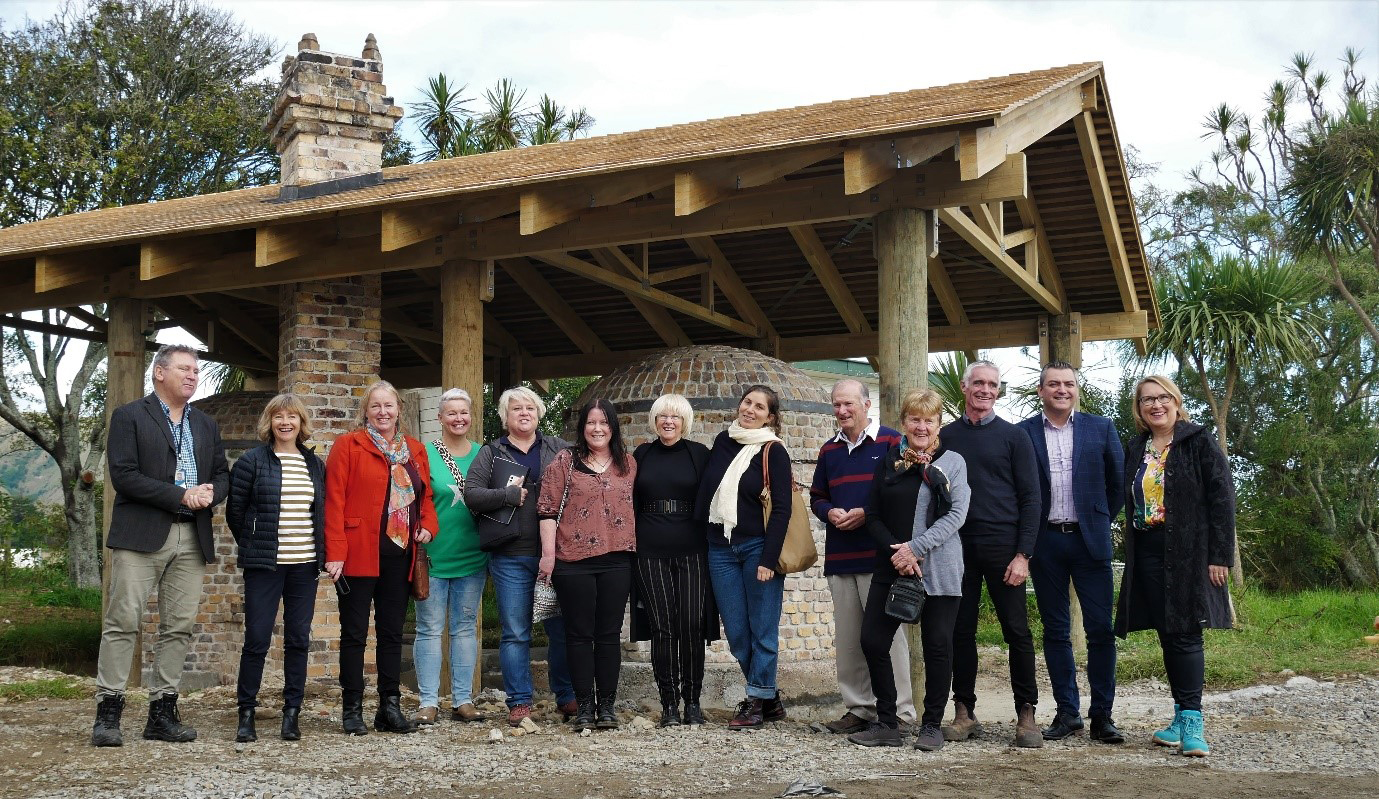
Members of the Smišek family, the Czech Consul-General, PP2Ō project team, Kāpiti Coast District Council and Mirek Smišek Arts Trust had a recent opportunity to inspect the kilns.
The historic kilns used by acclaimed potter Mirek Smíšek are a well-known local landmark. But it’s not just in Kāpiti where he is famous. His former homeland, the Czech Republic, is just as interested in the enormous impact and lasting legacy of Mirek Smišek.
The two towering kilns, near Te Horo, are the only known beehive kilns left in New Zealand. They were used for around forty years by the celebrated potter, and they have had new life breathed into them as part of the PP2Ō project.
Miroslav (Mirek) Smíšek was 15 when the Nazis occupied Bohemia and Moravia in 1939. He and his close friend Milos were forced to work in a steel factory for the Nazis, and they did their best to sabotage the operation. They made numerous attempts to escape and as a result were imprisoned at several different camps.
Smišek came to New Zealand in 1951, settling in Nelson before moving to a Te Horo property east of State Highway 1. He was New Zealand's first full-time studio potter and in 1990 was made an Officer of the Order of the British Empire for services to pottery. In 2011 he received the Gratis Agit award from the Czech Government for his contribution to the good name of the Czech Republic. He passed away in May 2013.
In 2019 the kilns and a nearby brick chimney were carefully dismantled and moved a short distance to the east of their original location, safely out of the way of the new expressway. Since then they have been carefully reconstructed.
Earlier this month the project team was pleased to welcome members of the Smíšek family and Consul-General of the Czech Republic to New Zealand, Hana Flanderova, to inspect the reconstructed kilns.
A tearful Ms Flanderova, on her final engagement in New Zealand, said this was an important piece of history for both countries and she was privileged to be able to visit them. She was accompanied by Mirek Smišek’s daughter Hanna, granddaughter Karri and widow Pamela Annsouth, as well Kāpiti Deputy Mayor Janet Holborow, fellow Councillors and members of the Mirek Smišek Arts Trust.
Now that the kilns are safe and sound in their new location, we hope they will become the cornerstone of a new ceramic arts centre. Watch the video below to find out more about these plans.
The Mirek Smišek Arts Trust vision
The historic Mirik Smišek kilns are at the centre of a move to establish an arts centre in Ōtaki. In the video below, the Kilns Trust members talk about their aspirations and about the famous potter who came from the Czech Republic to make his home on the Kāpiti Coast.
Main alignment about to be fully connected
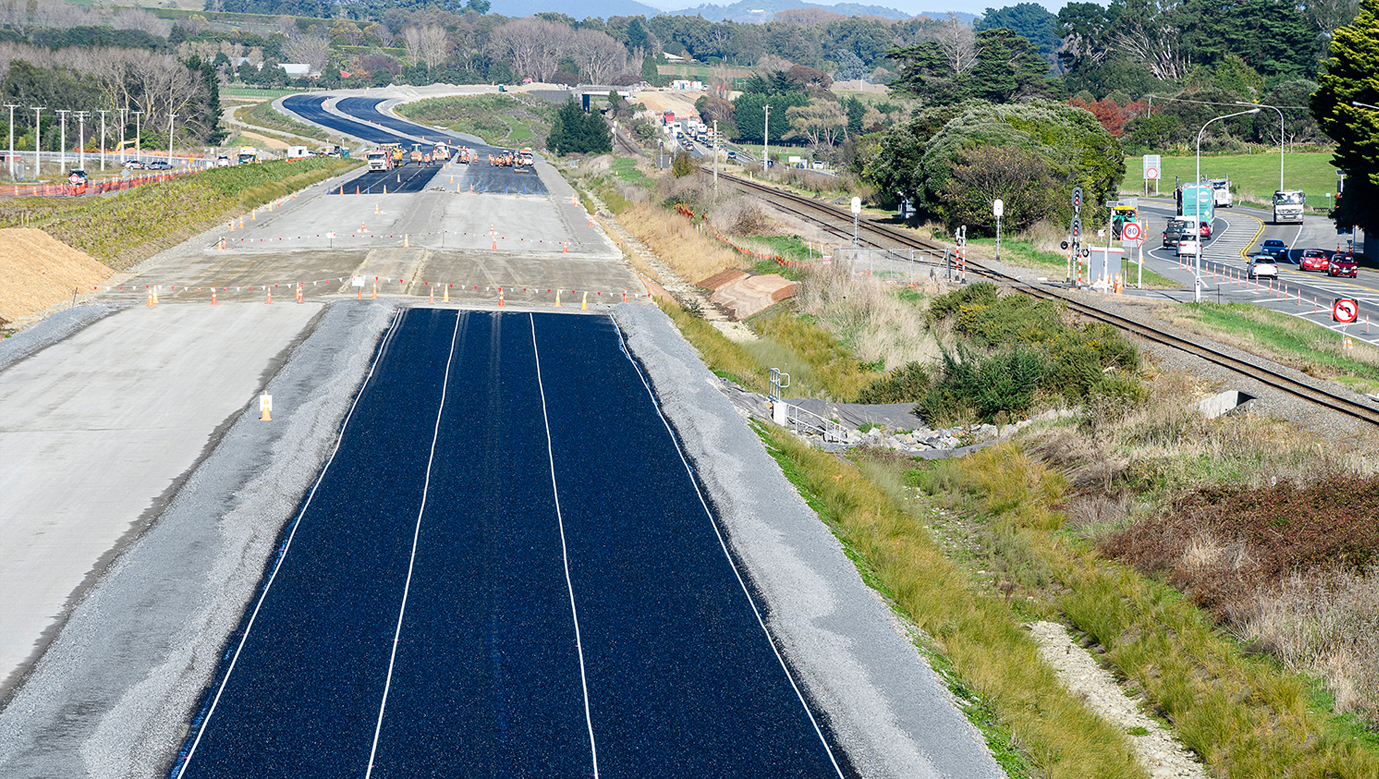
Laying Asphalt near Bridge 9.
The final beam being placed on Bridge 9, near Makahuri, means the main alignment of the expressway is closer to being fully connected, with the bridge nearing completion.
Travellers at the southern end of the project will have noticed a significant change in the landscape near the temporary section of State Highway 1 between Te Kowhai and Te Hapua Roads. Only a few months ago the project area looked like a series of sand and dirt dunes. Anyone who has peeked from the top of the School Road Bridge at Te Horo will have seen that pathways have now been sculpted into the landscape, and the shape of a road is starting to show its form.
Over the cold, wet, winter months, the project team will ensure that the subgrade across the expressway is complete, and approximately 100,000 tonnes of subbase will be placed on the mainline, ready for the paving season to start in the spring.
The jobs ahead
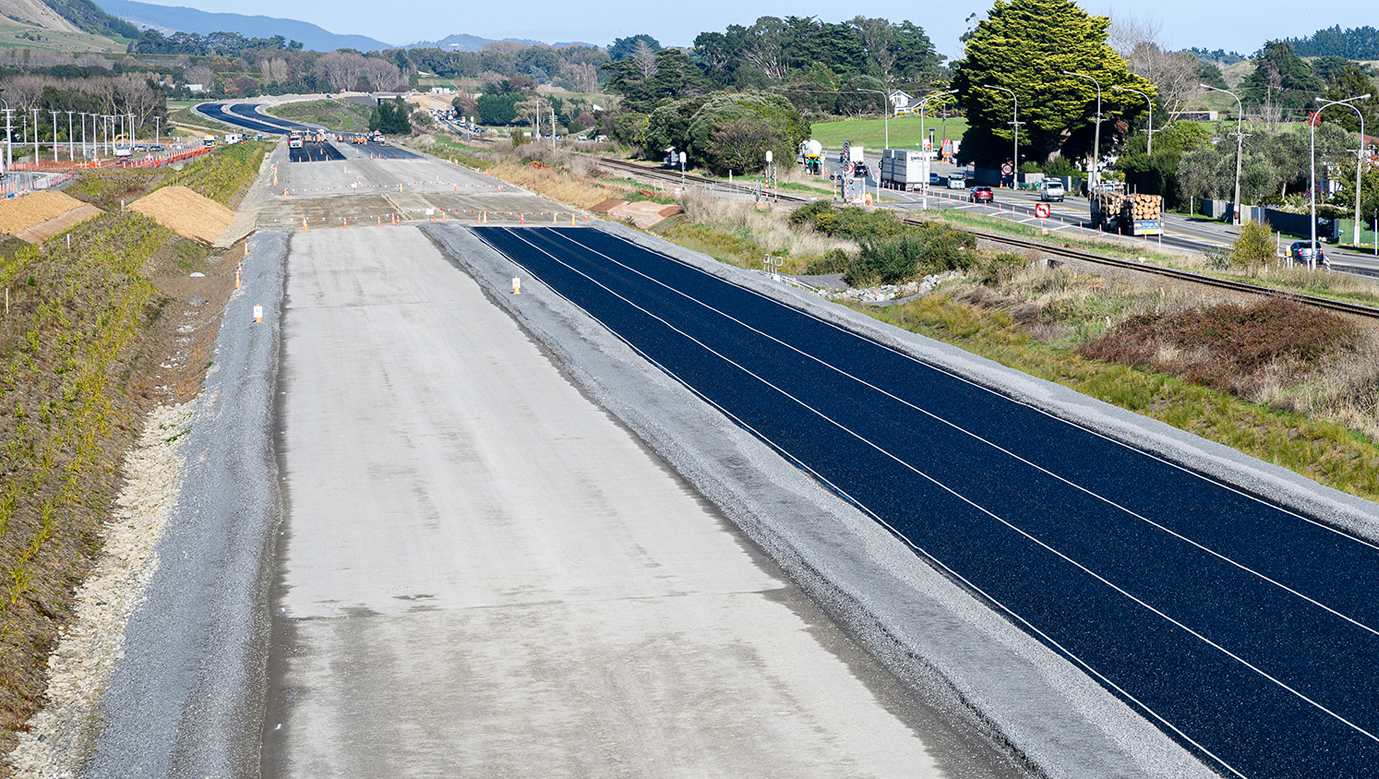
Expressway Construction underway at Te Horo.
As you drive alongside the Peka Peka to Ōtaki Expressway, you'll have noticed the progress being made up and down the 13km stretch of new state highway. Although it may seem that the four-lane expressway is almost finished, there is still some way to go before completion. To give you an idea of what lies ahead, we’ve put together a summary of the final stages of work.
One of the bigger pieces of work to complete, besides the asphalt laying, is the completion of drainage under and alongside the Expressway, which will prevent water from pooling on and alongside the road. There are also some earthworks to bring parts of the road to the correct height and some underground utilities to complete.
The pavement layers will take the most time, as there are at least three layers sitting atop the soil. They are:
- Sub-base layer (a grey coloured layer of aggregate mixed with cement sitting at the bottom of the pavement) – this is about 50% complete.
- First layer of asphalt (a hard thick-black layer of bitumen and aggregates) – about 15% complete
- Second layer of asphalt – scheduled to start within the next couple of months
- A final layer of asphalt on the road surface that provides skid resistance and a quieter ride. This will be completed closer to the opening next year.
Finally, there are things that make our roads safer and easier to use. These are:
- Roadside barriers down the middle and side of the road to help keep vehicles on the carriageway and prevent head-on accidents – this work could start as early as July.
- Road shoulders cover the area between the edge of the lane and the landscaping - this work is still to be completed
- Signage – installation starts later in this year
- Overhead lighting at the intersections – still to be scheduled
- Landscaping – planting continues up to and beyond opening
- Line marking – will be done just before opening
- Interfaces (tie-ins) between the new expressway and existing roads. These are at either end of the expressway and connections with local roads – this work is underway
- Shared use path for people walking, cycling and horse-riding
Our team is on track to complete the project in a safe and timely manner, and we are excited to deliver this asset to the national transport network. The expressway will make it safer and more efficient to travel in and out of the capital city, and will have a huge impact on our local community and everyone who uses the road.
Bridge 1 artwork continues
Ko te Waewae-Kāpiti-o-Tara-rāua-ko-Rangitāne
 If you are heading west on Taylors Road from State Highway 1, you will encounter ‘Ko te Waewae-Kāpiti-o-Tara-rāua-ko-Rangitāne’ or, as it is more commonly known - ‘Kāpiti’. Its image is etched on Bridge 1 over the Waitohu Stream.
If you are heading west on Taylors Road from State Highway 1, you will encounter ‘Ko te Waewae-Kāpiti-o-Tara-rāua-ko-Rangitāne’ or, as it is more commonly known - ‘Kāpiti’. Its image is etched on Bridge 1 over the Waitohu Stream.
The island was named by the Māori navigator, Whātonga, a grandson of the legendary explorer, Toi-te-huatahi (sometimes known as Toi-kai-rakau). Māori oral history tells a story of Whātonga being blown out to sea in his waka during a regatta in Hawaiki and his grandfather, Toi, setting off to find him.
Whātonga managed to find safe harbour at Rangiātea, but after returning to Hawaiki Whātonga discovered that his grandfather had gone searching for him, and he set off to find Toi. When he reached Rarotonga, Whātonga learned that Toi was in Aotearoa, so he continued his journey and found his grandfather living in Whakatāne.
Whātonga eventually settled in Heretaunga (Hastings) and had two sons, Tarataraika (Tara) and Tautoki. Tara settled in Te Whanganui-a-Tara (Wellington) and Tautoki settled in the Wairarapa, where he had a child, Rangitāne. Whātonga is said to have used Kāpiti Island as a boundary marker, using the southern tip and drawing a line across the North Island, where the land to the south belonged to Tara, and north of the marker to Rangitāne.
In the 1820’s the island became a trading base and fortress for Te Rauparaha, a notable chief of Raukawa and Ngāti Toa Rangatira descent, who is believed to be buried on the island.
In this artwork, Kāpiti is set against a background of purapura whetu (star dust). Purapura whetu is a symbol for the milky way with a traditional meaning that if your iwi or hapū was large in numbers, like the stars, then it would survive. Purapura whetu is a feature pattern of the Rangiātea Church in Ōtaki, with the design said to have been chosen by Te Rauparaha to signify his hope that the followers of the new (Christian) religion would number the stars.
Also shown in the artwork is ti kōuka (cabbage tree), which is prized as both a food source and natural first aid kit. Ti kōuka is also referred to as titahi (lone Ti) and is symbolic of stoic independence as it is often found growing on its own.
The traditional land block that the bridge spans across is named ‘Pukehou’ after the nearby hill. It is the papakāinga for Ngāti Kapu and this specific section of the block was previously owned by the decedents of Hema Te Ao and Hera Herangi.

Bridge 1 over the Waitohu Stream.
Upcoming construction milestones
Northern area update
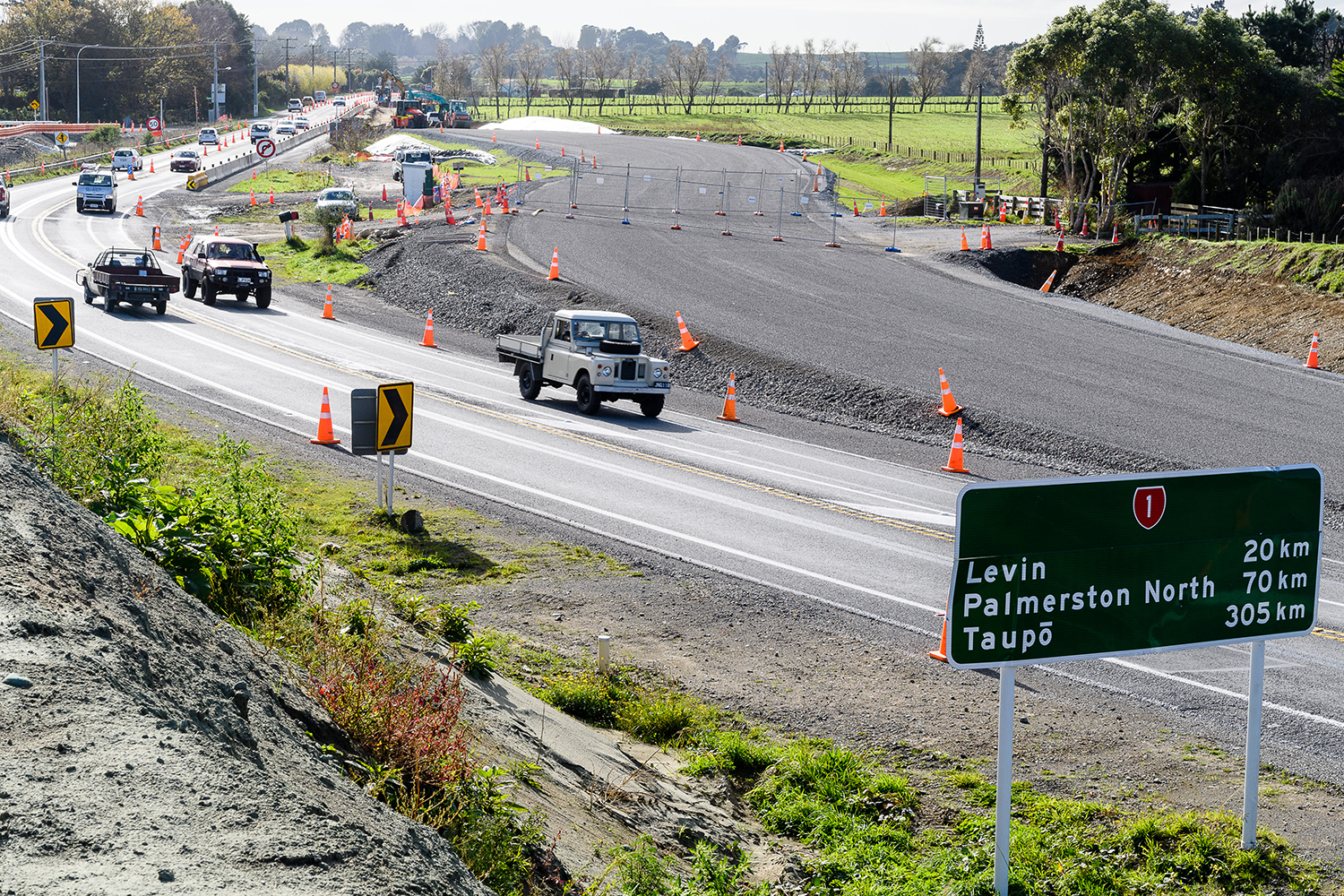
Construction of the temporary SH1 diversion near Taylors Road is completed.
Pavement works to the northern tie-in are scheduled to begin in late June. They will continue until early / mid-August, at which time state highway traffic will be switched to the already completed temporary road. This will allow completion of the northern approach to bridge 1 (Waitohu Bridge). Stabilised subbase and asphalt paving will continue in the areas between Pare-o-Matangi Reserve and the Ōtaki River.
Central area update
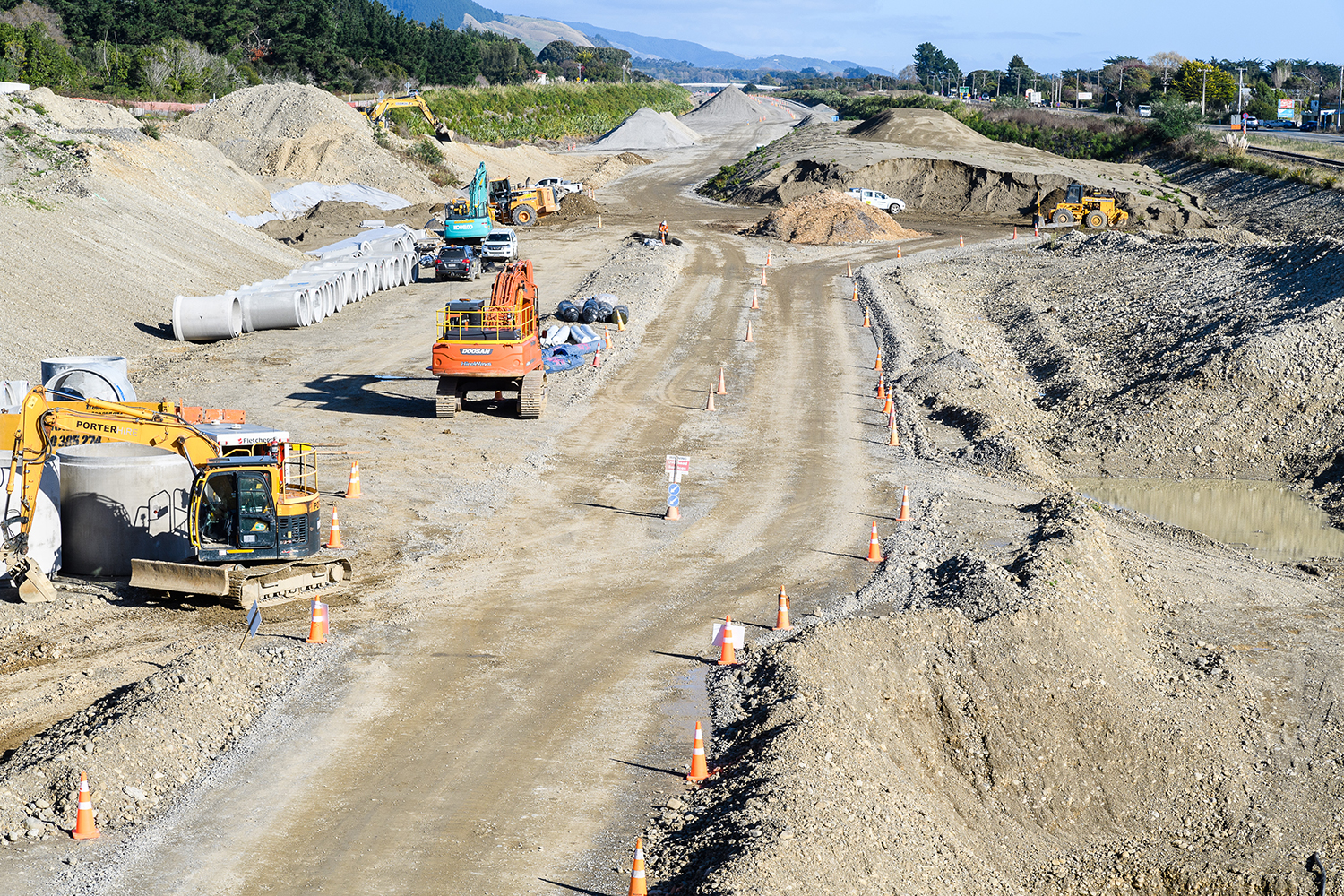
The construction works you can’t see from the road. Drainage and earthworks underway near Ōtaki Gorge Road.
With the Mirek Smišek kilns having been relocated and reconstructed, work on site will be completed over the next period. This includes landscaping and any pathways. Subbase stabilisation and asphalt pavement works will continue along the Hautere / Te Horo straights section of the alignment. Landscaping and wetland works will also be continuing.
Southern area update
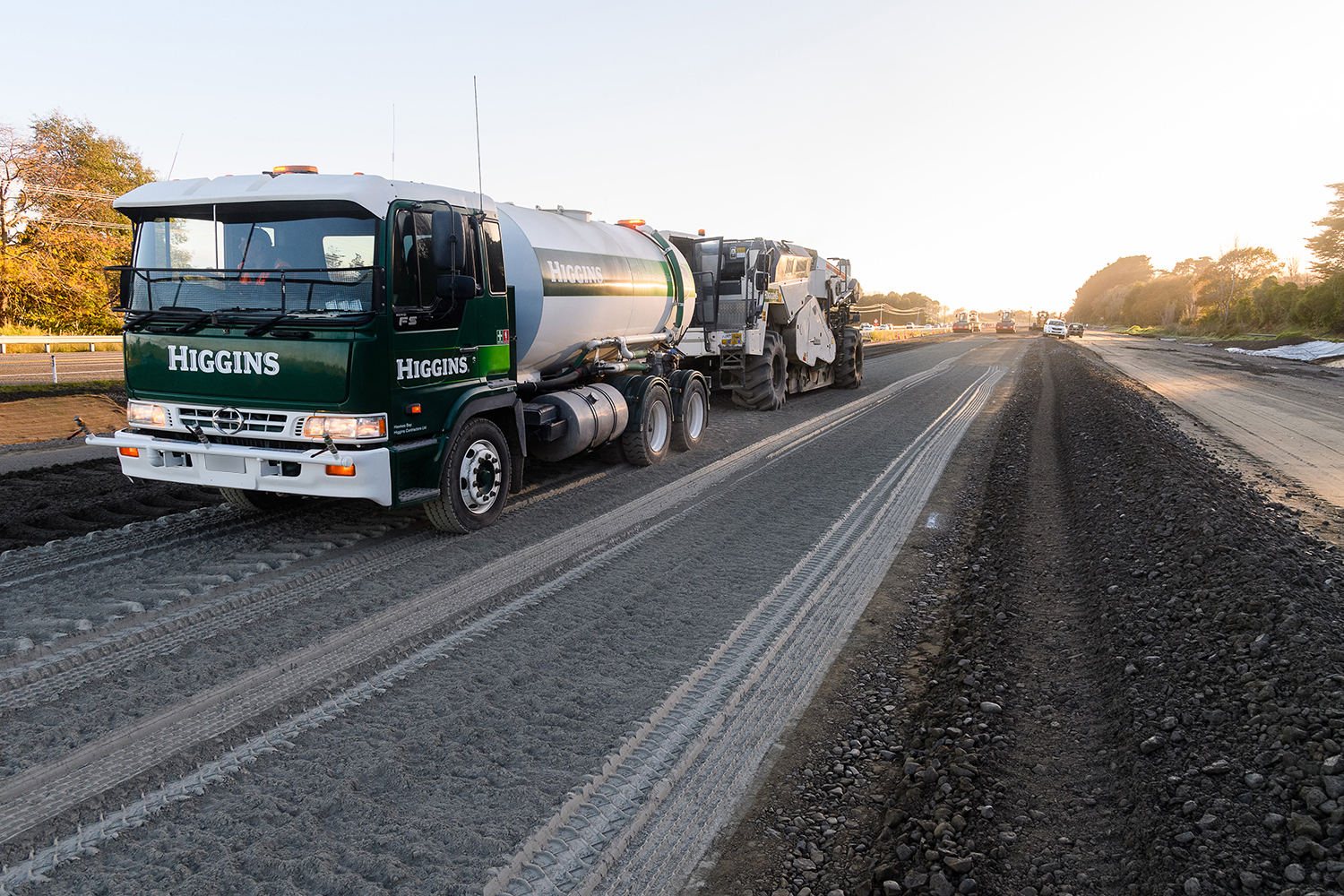
Cement stabilisation underway at southern end of the project.
Pavement works continue at the southern end of the expressway (Peka Peka) heading north toward the Te Hapua Rd. The Makahuri rail overbridge will progress with abutment concrete works and substantial deck reinforcing completed. The Makahuri basin wetland works will continue, with stabilisation and planting underway.